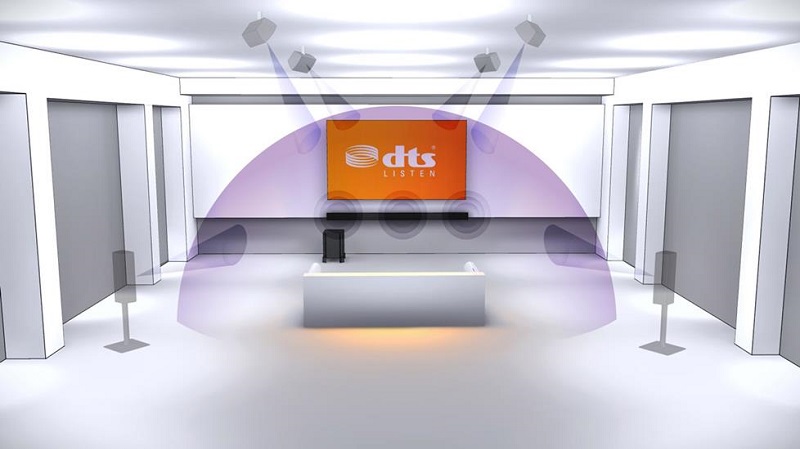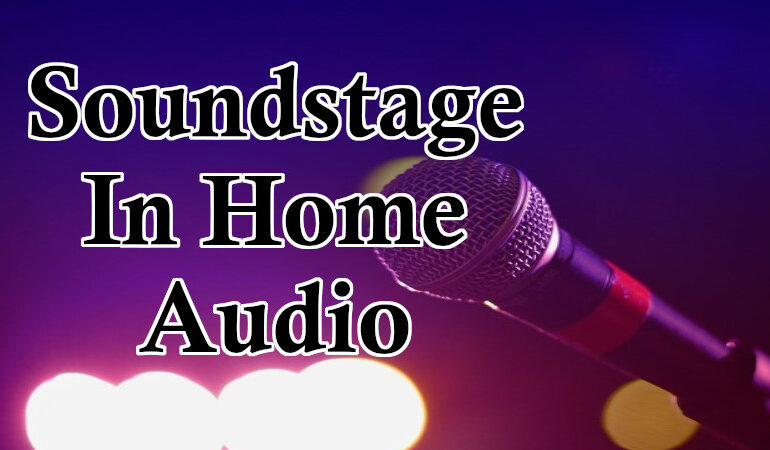What Does Soundstage in Audio Mean?
Audio reviewers use strange phrases. They love to talk about warmth and extension. They talk about depth and imaging. One such term that is bandied about is “soundstage.” What is soundstage when we are talking about audio reproduction? How do you know you have a good one? What can you do to improve it? Let’s discuss!
What is a Soundstage?
If you look up the word, you’ll find this definition:
the part of a motion-picture studio in which a production is filmed
You can probably find a couple of others all having to do with the motion-picture industry and filming. Clearly, in home audio, that is not the same definition of soundstage that we are using.

Use Your Imagination
In home audio, people will often refer to the width and sometimes depth of the soundstage created by their speakers. That should give you some indication of what they are hearing. When reviewers and others talk about soundstage, they are referring to the imaginary audio field that is outside of the width of the speakers. If you are using headphones, it is the feeling that the sound is coming from outside the headphones. If you are using regular speakers, it is that the sound extends past the distance of the speakers.

When you use a TV, if you are using the TV’s speakers, the sound very much is limited to the width of the TV. Rarely does it ever sound like the sound is coming from farther to the left or right. With normal speakers, the sound will not only be physically terminating from farther away from the TV, but also sound like it is even wider than the speakers. Here is our definition from our Glossary of Audio Terms:
The area between two speakers where the music is taking place is the soundstage. A good soundstage will allow the listener to pinpoint the placement of instruments within it. Soundstage is a function of the speakers but also dependent, in part, on having a good source track in which to make the identification of instruments and objects within it more practical. Some speakers have soundstages that extend beyond, above and in front of the physical speakers themselves, while others present muddier, shallow soundstages.
What Does a Good Soundstage Sound Like?
A good soundstage will extend past the outside locations of the speakers. The farther it extends, the “better” it is. That said, the outside dimensions of the soundstage are not the only factor. The speakers still have to be able to work together to create a convincing center image. When both speakers are playing in phase, the audio should sound like it is coming from the center point between the two speakers. When those two aspects are in perfect balance with the speakers able to create a convincing center image while still creating sound from as wide as possible, you have the best soundstage possible from your speakers in your room.
What Can Improve Soundstage
Obviously, the better the quality of your speakers, the better they can recreate the sound as it was intended. If you want to have the best possible soundstage (or any aspect of audio), getting good quality speakers is a must. In the same vein, acoustically treating your room is a must. Anything that makes the overall sound quality of your system better will improve your speakers’ ability to provide you with a convincing soundstage.

If you want to improve your soundstage, the number one thing you can do is to ignore the Dolby diagrams and adjust the angle of the toe-in of your speakers. Adjusting the toe-in of your speakers will make a huge difference in the width of your soundstage.
You might think that physically separating your speakers would improve your soundstage. If they are farther apart, the soundstage will be, by definition, wider. The problem is that if you physically separate them too much, they will not be able to create a coherent center image. Even if you have a center speaker, spacing your front left and right speakers too wide can create a disconnect as sounds pan across the front.
What About Soundstage Depth?
When talking about audio, you’ll sometimes hear talk about the depth of the soundstage. This is where things get muddy and we realize that there is no standardization in how we talk about audio. The soundstage usually is only the outside limits of where the sound can seem to emanate. Think of it as the fence around where the sound can exist (like where your dogs can go in your backyard). Most often, we are only thinking about left to right dimensions. Placing sounds accurately in that soundstage (within the fence) is more accurately referred to as Imaging. And that is an article for a different day.


